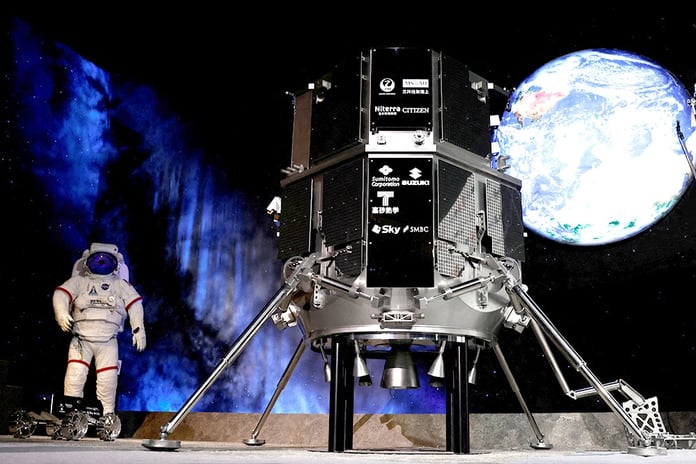The Japanese Hakuto-R lander from the private company ispace made a hard landing on the lunar surface with a high degree of probability. According to the company, during the descent of the lunar lander, the engineers recorded a small amount of fuel remaining, after which the speed of the device increased during the descent, and then the specialists lost contact with the Hakuto- R.
“Based on these facts, it was determined that there is a high probability of a hard landing of the device on the surface of the moon”, – reports “Interfax” by referring to company information.
It is noted that at the final stage of the landing, the aircraft descended into an upright position. However, after the landing was supposed to have already taken place, experts could not obtain data on Hakuto-R’s contact with the moon’s surface. Landing of the Hakuto-R lander was scheduled to take place at 7:40 p.m. Moscow time on Tuesday. According to the company, just before landing, engineers lost contact with the aircraft.
Recall that the Hakuto-R lander was launched on the Moon on December 11, 2022. In March 2023, the module was successfully launched into lunar orbit. Its size is approximately 2 by 2.5 meters.
In addition to the main probe, the module was supposed to deliver a ten-kilogram wheeled all-terrain vehicle “Rashid”, which was built by the United Arab Emirates. An even smaller miniature mobile robot, developed by the Japan Aerospace Exploration Agency (JAXA) and Japanese toy company Tomy, was also to be delivered to the Moon.
Now, engineers continue to analyze telemetry data received during the final stage of the landing, to determine the cause of the accident.
Japan’s first lunar lander was launched Dec. 11 from Cape Canaveral by SpaceX’s Falcon 9 rocket. Hakuto-R could be the very first private spacecraft to successfully land on the moon.
Had Hakuto-R’s lunar landing been successful, Japan would have become the fourth country in the world to land a spacecraft on the moon. So far, only the USSR, the USA and China have been able to do this.
In the meantime
The launch of the Russian Luna-25 spacecraft is scheduled for July 2023. The automatic interplanetary station “Luna-25” will lay the foundation for the Russian lunar exploration program by automatic means. The lander is intended to test soft landing and complex search technology on the lunar surface in the southern circumpolar region.
Luna-25 is the first lunar space probe launched in our country since 1976. The flight to the Moon will take 4.5-5.5 days, depending on the specific launch date. The name “Luna-25” emphasizes continuity with the Soviet series of lunar explorations completed almost 50 years ago.
The device, as expected, for the first time in history will land not in the equatorial region, but in the region of the south pole of the earth satellite.
Read the Latest Science and Technology News Today on The Eastern Herald.


